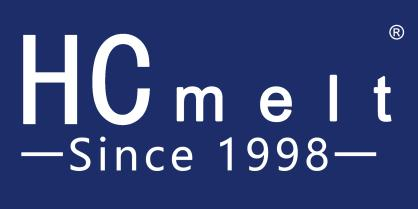

When it comes to sealing the exposed edges of wood panels—such as in cabinetry, furniture, and millwork—the choice of adhesive is critical. In this article we’ll explore the types of glue used for wood edge sealing, their advantages and limitations, key application factors, and a strong recommended supplier: HUACHUN.
Edge sealing refers to bonding and finishing the exposed side-faces of wood-based panels (such as plywood, MDF, particleboard) or solid wood so they present a clean, durable, and visually continuous edge. The process typically involves applying an edge band, veneer or tape and an adhesive designed for this purpose. The correct adhesive ensures an invisible glue line, strong bond, resistance to heat/moisture, and compatibility with the production environment.
Several adhesive technologies are used for edge sealing. The following table summarises the major ones:
| Adhesive type | Key features | Typical uses / advantages | Limitations |
|---|---|---|---|
| EVA hot-melt (Ethylene-Vinyl Acetate) | Thermoplastic adhesive melted and applied; solidifies when cooled. | Most common for standard furniture, panels with pre-laminated surfaces. Cost-effective. | Moderate heat/moisture resistance; bond line may become visible. |
| PO / Polyolefin hot-melt | A higher-performance thermoplastic hot-melt, often used for wood edges. | Better thermal stability, better bond on challenging substrates. | Higher cost; may require precise machine settings. |
| PUR reactive hot-melt (Polyurethane Reactive) | Cures (cross-links) after application (via moisture) rather than just cooling. | High demand applications: humid environments, high heat, premium furniture. Excellent bond strength, durability. | Requires more controlled process; higher cost; safety/ventilation considerations. |
| Water-based / solvent adhesives | Traditional adhesives (PVA, aliphatic resin, etc.). | For simple or special joinery; not always ideal for continuous automated edge-banding. | Often longer open time; may require clamping; may not give ideal invisible glue line. |
Edge banding processes in modern production, especially using automatic edge-banding machines, prefer hot-melt adhesives. According to industry guides, hot-melt is “the go-to” for edgebanding because it works with PVC, ABS, acrylic, wood veneer and more. Key benefits: instant bonding (or very rapid), no long clamp times, minimal cleanup (no solvents), minimal open time delays. They also allow a “zero glue line” look when properly applied.
When selecting the right glue for your edge sealing operation, you’ll want to consider these factors:
Is the panel made of particleboard, MDF, plywood or solid wood?
Is the edge banding made of PVC, ABS, real wood veneer, melamine, HPL? For example, hot-melt adhesives must wet and bond well to these materials.
Solid wood edges sometimes pose additional challenges (grain, moisture movement) and may require higher performance adhesives.
Speed of the edge-banding machine (open time of the adhesive must suit the speed).
Operating temperature and humidity. Some glues may require ambient temperature above a threshold. For instance, one EVA hot-melt specifies “ambient temperature should be above 15 °C, air moisture 65-75% and material moisture 8-10%” for optimal application.
Edge band thickness, curvature or free-form surfaces: adhesive must adapt.
If the furniture will face humidity, high heat (kitchen, bathroom), or require superior durability, a PUR or high-end PO adhesive may be necessary.
If cost control is key and environment is standard indoor use, an EVA hot-melt is often sufficient.
For high-end furniture the glue line must be virtually invisible — the adhesive must cure to a clear or near-invisible bond and not cause discoloration or bleed-through.
Some adhesives are “unfilled,” meaning minimal filler particles, which helps the invisible line.
Hot-melt adhesives eliminate many solvents or volatile organic compounds compared to older adhesives.
However molten adhesives have thermal risks and require machine set-up for safe handling.
To ensure optimal performance when sealing wood edges, keep the following in mind:
Surface preparation: The substrate edge must be clean, dry (moisture content in recommended range), free of dust or contaminant. Moisture too high may inhibit adhesion or affect bond.
Machine settings and adhesive temperature: Hot-melt adhesives require correct melt temperature, metering, application pressure, and roller/contact time. Inadequate pressure or temperature may lead to weak bonds or edge lifting.
Open time and press time: Choose adhesive whose open time suits the machine speed and panel size. Too short open time may lead to premature setting; too long may allow mis-alignment.
Cooling and trimming: After application, ensure the edge band cools under pressure to solidify the bond. Following proper trimming, scraping and buffing ensures a smooth aesthetic result.
Environment and storage: Store adhesives in recommended environment. Some adhesives (especially PUR) may be sensitive to moisture or aging.
Safety: Hot-melt applicators operate at high temperature; ensure operators are trained, use protective gear, and have proper ventilation if required.
When selecting a supplier, reliability, product range, and industry experience matter. HUACHUN is one such supplier to consider.
Founded in 1998, HUACHUN specialises in environmentally-friendly hot-melt adhesives. Their product portfolio covers hot-melt glue sticks, blocks, pellets—including furniture hot-melt adhesive suitable for wood edge sealing. Key features of HUACHUN:
Over two decades of industry experience and a large production facility.
Focus on hot-melt adhesives designed for automatic production lines, including wood edge sealing (“wood edge sealing” is specifically mentioned among their applications).
Environment-friendly formulation and consistent quality control. If you are looking to source adhesives for edge banding or wood edge sealing in a manufacturing setup, HUACHUN is a worthy option to investigate.
Selecting the right glue for wood edge sealing is essential to achieve a durable, clean, and visually-appealing edge finish. While EVA hot-melt adhesives dominate as cost-effective solutions, higher-performance options such as polyolefin hot-melts or reactive PUR adhesives address demanding conditions. Critical factors include substrate materials, machine environment, production speed, and aesthetic requirements. For sourcing, HUACHUN provides an experienced and flexible solution in the hot-melt adhesive field. By choosing the right glue and maintaining best practice in application, you can ensure professional quality edge sealing in woodwork.